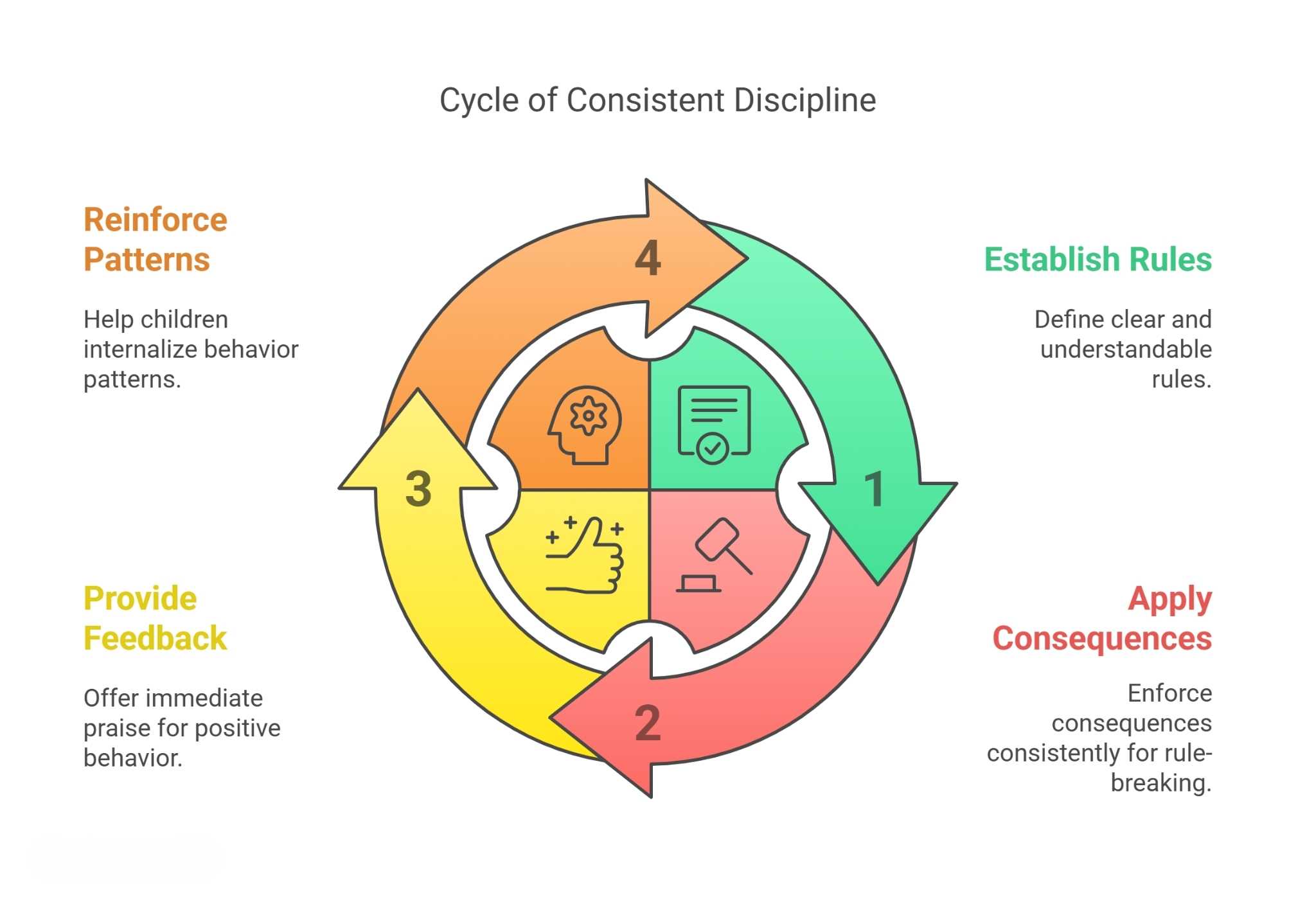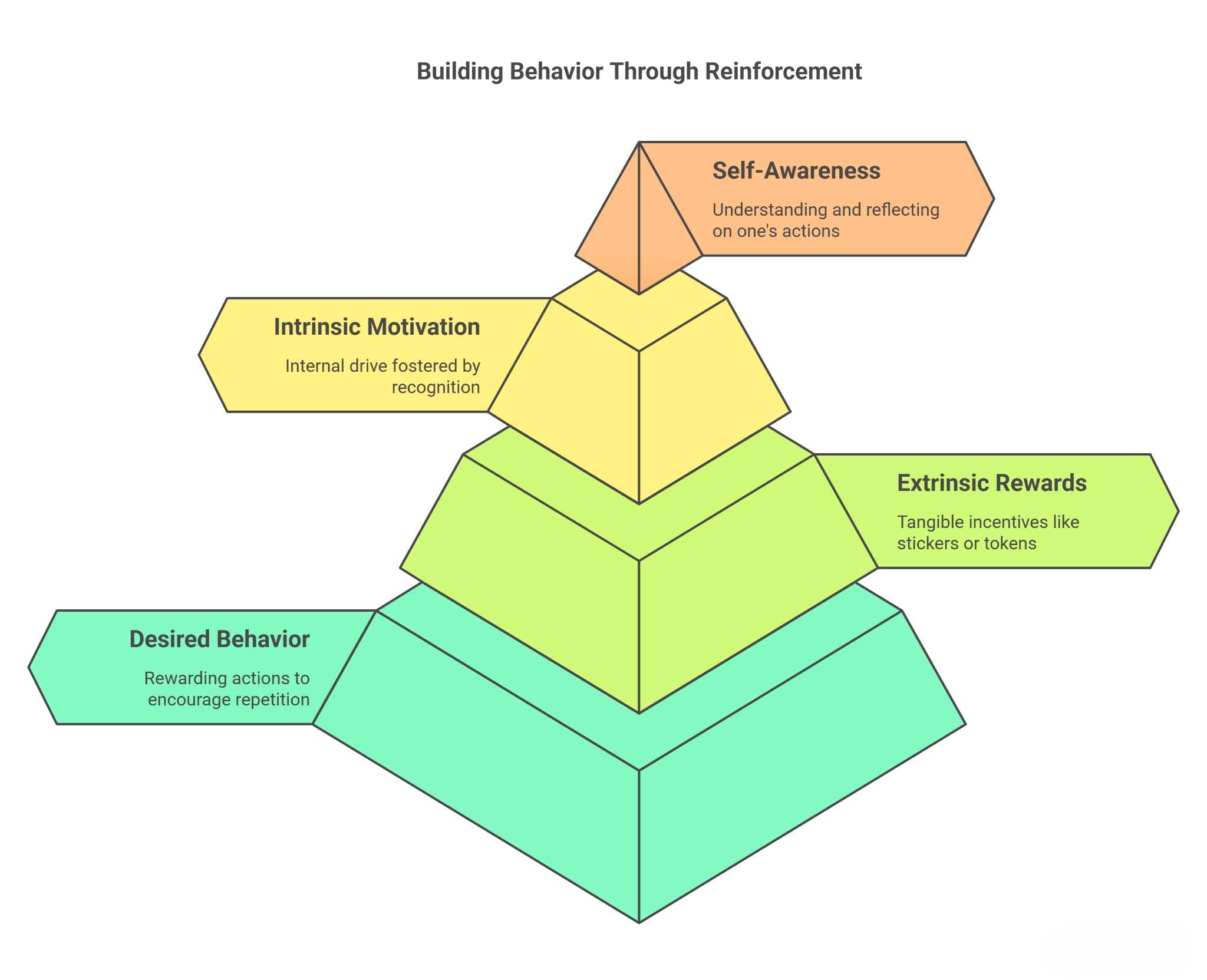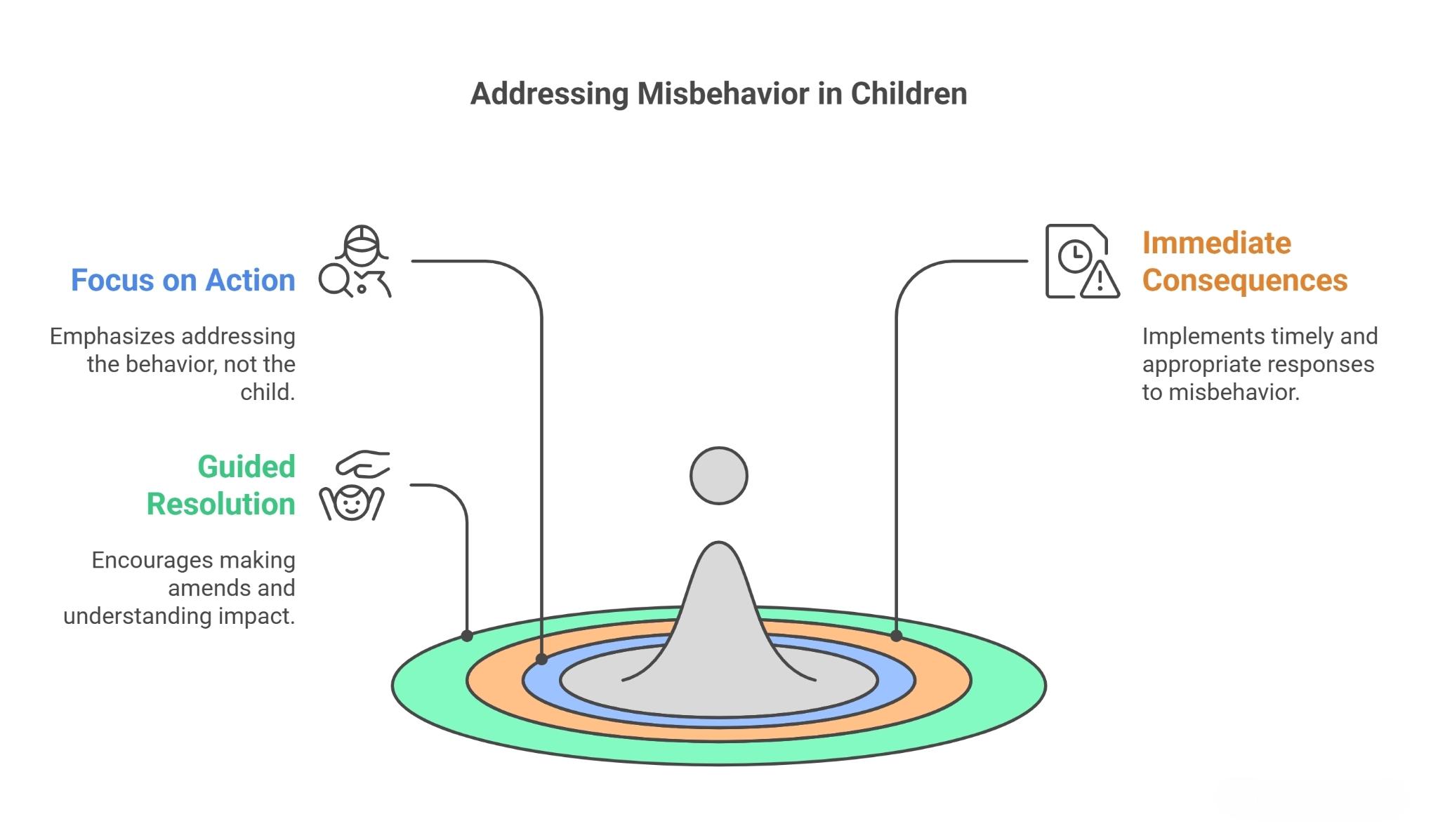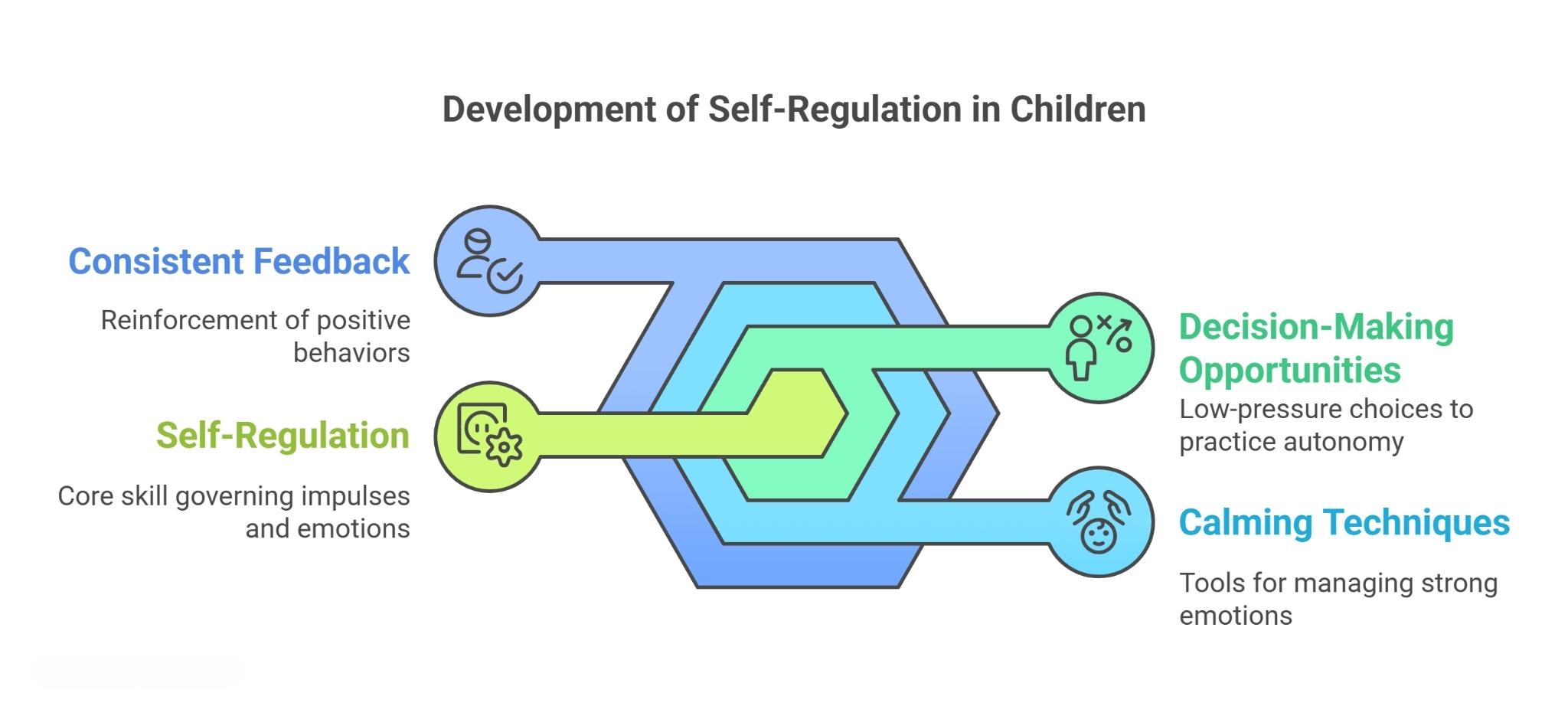Introduction
Every child or learner benefits from a structured environment where rules, boundaries, and expectations are clear. Whether you are a parent, teacher, or caregiver, the way you communicate guidelines and respond to behaviors profoundly affects a young person’s development. Discipline is not merely about enforcing rules; it also involves nurturing, guiding, and encouraging the growth of important life skills, such as self-regulation and personal responsibility. In the sections that follow, we will explore six core components that form the foundation of a healthy, respectful, and effective disciplinary framework: (1) the importance of setting boundaries, (2) establishing clear expectations, (3) consistency in discipline, (4) positive reinforcement techniques, (5) addressing misbehavior appropriately, and (6) encouraging self-regulation skills.
Although every child is unique, these principles can be adapted to fit various personalities, learning styles, and cultural contexts. The overarching goal is to foster an environment where children feel secure, motivated to learn, and willing to collaborate. By implementing well-thought-out boundaries, clearly articulating expectations, applying consistent discipline measures, using positive reinforcement, addressing misbehavior proactively, and teaching self-regulation, you support children in developing respect for themselves and for others.
1. Importance of Setting Boundaries
Boundaries provide a sense of security and structure. Children, like adults, need to know the limits within which they can safely explore, learn, and grow. Boundaries define acceptable and unacceptable behavior, helping young people understand how their actions can affect themselves and those around them. When boundaries are clearly defined, children experience consistency and predictability, which reduces anxiety or uncertainty about what is permissible. In turn, this predictability fosters a sense of comfort and belonging.
Moreover, setting boundaries lays the groundwork for healthy relationships. When children understand that boundaries exist not to restrict them arbitrarily, but to protect them or to promote mutual respect, they can more readily accept and respect these rules. For instance, having a boundary about “no name-calling” helps children recognize that words can harm and that respect is a two-way street. Such early lessons encourage empathetic thinking and social awareness. They also create a family or classroom culture where kindness and fairness take center stage, eliminating confusion about what is expected from each person.
Boundaries also teach children about accountability. They learn that specific actions have specific consequences, and that disregarding a rule can lead to a predictable outcome (e.g., a loss of privileges). Learning accountability in a safe environment prepares them for the broader world, where their actions will continually influence the results they experience in school, extracurricular activities, and social interactions. In essence, well-chosen boundaries act as building blocks for both emotional security and moral development.

2. Establishing Clear Expectations
While boundaries set the overall framework, clear expectations translate those boundaries into concrete, understandable guidelines. Children thrive when they know the “why” and “how” behind rules. For example, stating “We clean up our toys before dinner to keep our space tidy and safe for everyone” informs children about the exact behavior desired and the rationale behind it. By taking a moment to explain why a particular rule exists, you empower them with context, reducing the chance of resentment or resistance.
One effective technique for establishing clear expectations is to ensure that rules are positively stated and age-appropriate. Instead of using primarily prohibitive language such as “Don’t run,” you could say, “Please walk inside the house.” Positive phrasing outlines the desired behavior in a friendly, affirmative way. Likewise, the complexity of the expectations should match the child’s age or developmental stage. Younger children may need visual aids, short phrases, or repetitive reminders, whereas older children might appreciate more detailed discussions about the reasoning behind certain rules or the potential long-term benefits of following them.
It can also be helpful to involve children in the rule-setting process whenever possible. Collaboration fosters a sense of ownership and respect for the guidelines. For instance, in a classroom setting, a teacher might ask students to brainstorm rules for group projects. When children participate in creating the rules, they are more likely to follow them. The practice of setting and articulating clear expectations is an opportunity to develop open communication skills, teach children about mutual respect, and generate an environment of cooperation.

3. Consistency in Discipline
Consistency is often cited as one of the most critical components of effective discipline. Without consistency, even well-defined rules and boundaries can become confusing, leading children to test limits or disregard guidelines altogether. When the consequences for certain actions vary from day to day or from situation to situation, children may grow unsure about what behavior is acceptable. This inconsistency can undermine the trust and respect they have for the rule-setter—be that a parent, teacher, or caregiver—and make discipline seem arbitrary or unfair.
To maintain consistency, ensure that you follow through on established consequences when boundaries are crossed. For instance, if the rule is “no television until homework is finished,” then it must be consistently enforced, no matter if you are tired after a long day or if the child pleads for an exception. While flexibility has its place in special circumstances, it is crucial to clarify when and why an exception is being made, so it doesn’t appear as though the rule is easily bent or entirely negotiable.
Consistency also applies to positive feedback: praise or reward desirable behavior whenever it happens, regardless of timing or context. This means if a child demonstrates kindness or shares with a sibling, they should receive similar acknowledgement every time. Consistency in both rewards and consequences helps reinforce the idea that certain actions will reliably lead to certain outcomes. Over time, children internalize these consistent patterns, and self-discipline can develop. They will come to recognize that following rules is not merely about avoiding punishment but about behaving responsibly and contributing to a harmonious environment.

4. Positive Reinforcement Techniques
Positive reinforcement is a powerful tool for shaping behavior. At its core, it involves rewarding and reinforcing desired behaviors rather than focusing primarily on punishing unwanted actions. Examples of positive reinforcement include verbal praise, small privileges, sticker charts for younger children, or token economies in classroom settings. The fundamental principle is that a behavior which is rewarded is more likely to be repeated.
The effectiveness of positive reinforcement lies in its capacity to build self-esteem and intrinsic motivation. When a child feels recognized and appreciated for their efforts, they are encouraged to continue on the same path. This approach shifts the emphasis from “what not to do” to “what to do,” fostering a more positive atmosphere. Instead of children feeling monitored for mistakes, they are motivated to seek out positive acknowledgment. Over time, the desire for a reward or praise can evolve into genuine pride in meeting expectations.
However, it is important to balance extrinsic rewards with intrinsic motivations. While stickers or tokens can serve as good initial incentives, regularly incorporate verbal affirmations that acknowledge the child’s process, effort, or improvement. Statements like, “I noticed how hard you worked on that project,” or “You showed a lot of patience and kindness there,” highlight character traits and values. This encourages a sense of self-worth and responsibility for one’s actions, without relying solely on tangible rewards. When used appropriately, positive reinforcement not only encourages good behavior but also helps cultivate a strong sense of self-awareness and confidence.

5. Addressing Misbehavior Appropriately
No matter how carefully boundaries and expectations are set, misbehavior is bound to happen. Children are learning and experimenting, and mistakes are part of that process. The key is to address misbehavior in a way that helps them understand why what they did was unacceptable, how they can fix it, and how they can make better choices in the future. One constructive approach is to focus on the action rather than the child. Instead of saying, “You are bad for lying,” you could say, “It’s not acceptable to tell a lie because it breaks trust. How can we make this right?”
Immediate and proportionate consequences help reinforce the seriousness of a rule breach. A small, time-limited “time-out” or the temporary loss of a privilege (like electronic device access) can be effective. The key is to ensure that the consequence is directly related to the misbehavior and is carried out calmly, not in anger. If a child is disciplined in the heat of the moment, the focus can shift to the intensity of the adult’s reaction, rather than the lesson the child needs to learn.
After addressing the misbehavior, always attempt to guide children toward a resolution or reconciliation, if relevant. For example, if a child hurt a sibling by teasing, encourage them to apologize and find a way to make amends, such as playing together cooperatively or writing a note of apology. This teaches empathy and underscores that actions have real effects on others. By staying calm, consistent, and empathetic in response to misbehavior, you provide a stable platform from which children can grow and learn from their mistakes.

6. Encouraging Self-Regulation Skills
One of the ultimate goals of discipline is to help children develop self-regulation—an internal sense of control that governs their impulses, emotions, and reactions. Self-regulation enables children to pause before acting, think through the consequences, and choose more productive behaviors. By developing these skills, they learn how to cope with frustrations, resolve conflicts, and maintain focus on tasks, all while respecting the boundaries and expectations set for them.
To encourage self-regulation, offer opportunities for children to practice decision-making in a low-pressure setting. For instance, allow them to choose between two appropriate snack options or decide the order of chores. These small exercises in autonomy teach children to weigh pros and cons while respecting an overall set of guidelines. It also reinforces that with autonomy comes responsibility. Additionally, teaching them simple calming techniques—like taking deep breaths, counting to ten, or walking away from a tense situation—gives them valuable tools to manage strong emotions.
Providing consistent feedback on how they handle challenging situations is crucial. When you notice a child exercising self-control (e.g., waiting patiently, sharing, or showing kindness under stress), point it out explicitly: “I saw you took a moment to calm down before talking. That was very responsible.” Such affirmations reinforce their efforts and boost their confidence in their ability to regulate emotions and behavior. Over time, children who develop solid self-regulation skills are less reliant on external enforcement of rules because they understand the value of good behavior for themselves and for those around them.

Conclusion
Discipline, at its best, is not merely about preventing or punishing misbehavior. It is a holistic framework for guiding children toward becoming responsible, respectful, and empathetic individuals. Setting boundaries creates a predictable environment that children can navigate with confidence. Clear expectations ensure that rules are understood and implemented in a transparent, fair manner. Consistency in discipline reinforces the trustworthiness of those rules, illustrating that the same standards apply at all times. Positive reinforcement highlights and encourages the behavior you want to see more often, building self-esteem and motivation in the process. When misbehavior inevitably occurs, addressing it calmly and fairly turns it into a teachable moment, rather than a purely punitive experience. And finally, helping children develop self-regulation skills empowers them to become self-directed and capable of making positive decisions independently.
By integrating these six components—boundaries, expectations, consistency, positive reinforcement, appropriate responses to misbehavior, and self-regulation—parents, educators, and caregivers can create an environment that not only curbs negative behaviors but also celebrates and nurtures growth. Over time, this approach shapes individuals who understand how to set limits for themselves, treat others with respect, and approach the challenges of life with resilience. In essence, effective discipline strategies pave the way for well-rounded development, guiding children toward a future in which they can thrive socially, emotionally, and morally.






